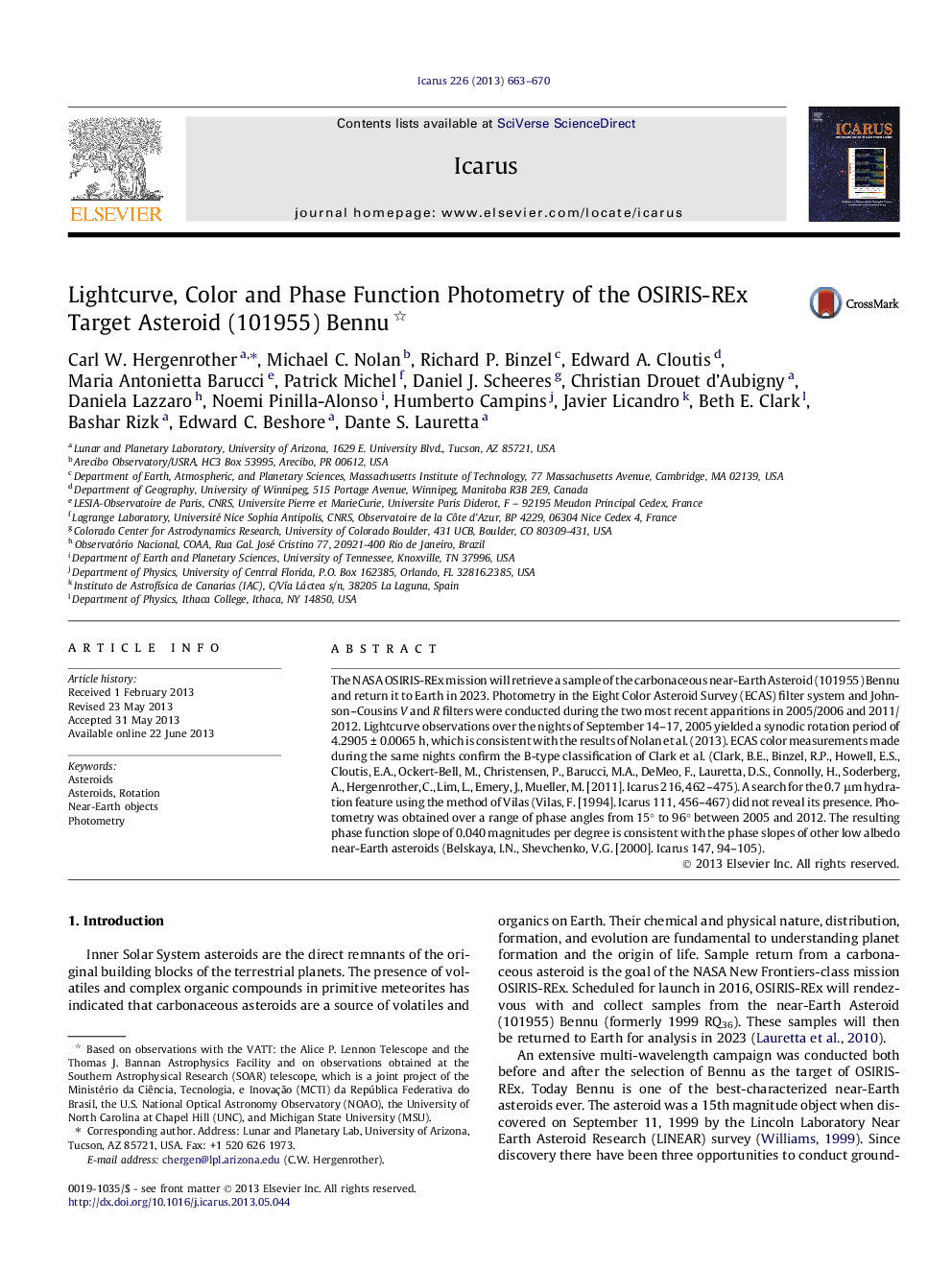| Article ID | Journal | Published Year | Pages | File Type |
|---|---|---|---|---|
| 10701332 | Icarus | 2013 | 8 Pages |
Abstract
The NASA OSIRIS-REx mission will retrieve a sample of the carbonaceous near-Earth Asteroid (101955) Bennu and return it to Earth in 2023. Photometry in the Eight Color Asteroid Survey (ECAS) filter system and Johnson-Cousins V and R filters were conducted during the two most recent apparitions in 2005/2006 and 2011/2012. Lightcurve observations over the nights of September 14-17, 2005 yielded a synodic rotation period of 4.2905 ± 0.0065 h, which is consistent with the results of Nolan et al. (2013). ECAS color measurements made during the same nights confirm the B-type classification of Clark et al. (Clark, B.E., Binzel, R.P., Howell, E.S., Cloutis, E.A., Ockert-Bell, M., Christensen, P., Barucci, M.A., DeMeo, F., Lauretta, D.S., Connolly, H., Soderberg, A., Hergenrother, C., Lim, L., Emery, J., Mueller, M. [2011]. Icarus 216, 462-475). A search for the 0.7 μm hydration feature using the method of Vilas (Vilas, F. [1994]. Icarus 111, 456-467) did not reveal its presence. Photometry was obtained over a range of phase angles from 15° to 96° between 2005 and 2012. The resulting phase function slope of 0.040 magnitudes per degree is consistent with the phase slopes of other low albedo near-Earth asteroids (Belskaya, I.N., Shevchenko, V.G. [2000]. Icarus 147, 94-105).
Related Topics
Physical Sciences and Engineering
Earth and Planetary Sciences
Space and Planetary Science
Authors
Carl W. Hergenrother, Michael C. Nolan, Richard P. Binzel, Edward A. Cloutis, Maria Antonietta Barucci, Patrick Michel, Daniel J. Scheeres, Christian Drouet d'Aubigny, Daniela Lazzaro, Noemi Pinilla-Alonso, Humberto Campins, Javier Licandro,
